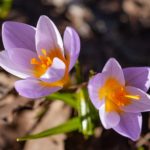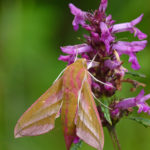Golden rules for helping pollinators
April 25, 2019
We all know our pollinators need a helping hand.
Bees, butterflies, beetles, bats and birds are vital in the maintenance of our ecosystems and, in recent years, those species have been suffering.
Pollinator species are essential to the plants that bring us so many every day things – from fruit and vegetables, to raw materials and fibers for making clothes and essential oils.
To help our pollinators thrive again, here’s a few little things you can do to help turn your garden or window box into a haven for pollinators:
 1. Make sure you provide year-round nectar sources by having a good variety plants that flower at different times of the year, especially late winter/early spring.
1. Make sure you provide year-round nectar sources by having a good variety plants that flower at different times of the year, especially late winter/early spring.
Plants that are especially useful include ivy, crocus and hellebores.
2. Try to go for cultivars with single open flowers rather than doubles or those with tightly packed petals which stop insects reaching the nectaries of the plant.
Foxgloves and red clovers are perfect pollinator food.
 3. Don’t forget than many insects come out at night.
3. Don’t forget than many insects come out at night.
A good way to tell if a plant is attractive to nocturnal insects is to see if its scent becomes stronger at dawn and dusk (i.e honeysuckle) as these are the peak times for crepuscular insects to forage, especially moths, beetles and flies.
These plants tend to have paler coloured flowers too, which become luminous at night, such as evening primrose.
Lots of nocturnal insects means lots of bats!
4. Try not to use insecticides as they affect beneficial insects as well as pests.
It also breaks the food chain in your garden and deprives garden birds of their food!
 5. Don’t be too tidy at the end of the summer – the hollow stems of dead plants make great overwintering sites for insects.
5. Don’t be too tidy at the end of the summer – the hollow stems of dead plants make great overwintering sites for insects.
This gives them the ideal habitat for cosying up until the garden wakes up again in the spring.
